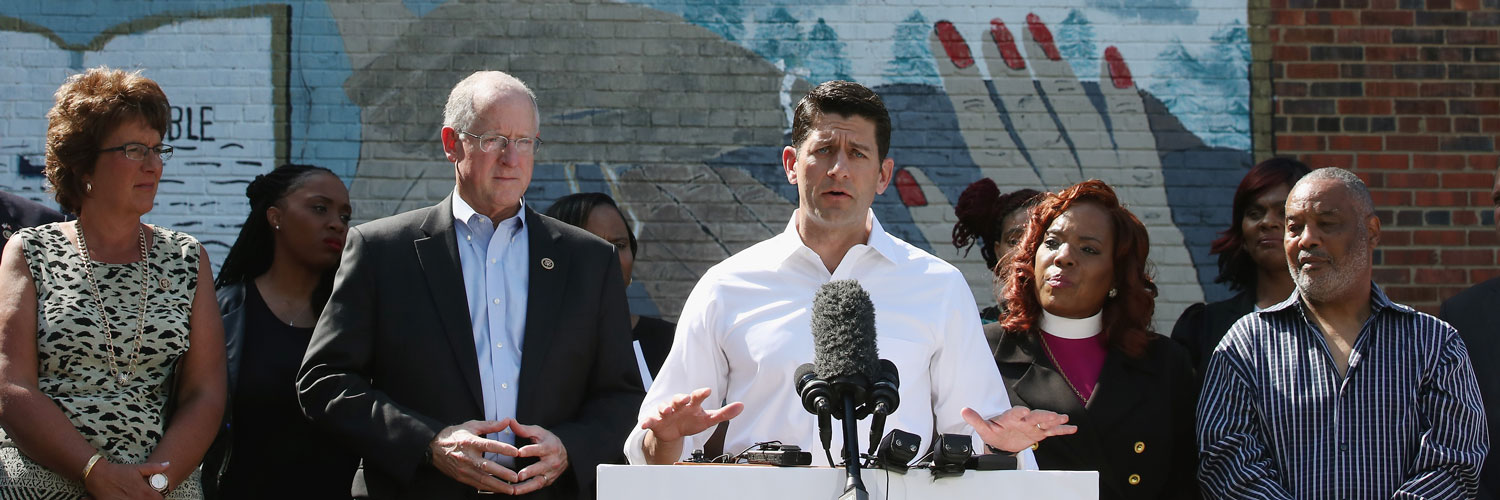
Throughout June, Urban Institute scholars will offer evidence-based ideas for reducing poverty and increasing opportunity.
Consensus is growing: our political leaders need to address poverty and inequality. Almost two-thirds of Americans believe that the wealth gap has grown in the last 10 years. In fact, gaps in wealth and income have accelerated since the 1970s, and the level of wealth concentration now looks similar to the 1920s.
However, policymakers can’t agree on how best to address issues related to poverty, and these differences extend beyond simple ideological divergence. For many problems, we don’t know how best to improve lives for struggling families and individuals. Often we lack evidence for replicable solutions to issues we care most about.
Earlier this month, tucked into the release of their “A Better Way” poverty plan, House Speaker Paul Ryan and House Republicans identified several significant strategies that could help build evidence for effective policies, programs, and practices.
Building on Speaker Ryan’s leadership on the establishment of the bipartisan Commission on Evidence-Based Policymaking, these approaches largely sidestep the political animus surrounding other proposals and instead stand with support from both parties.
Here are three innovative ideas that caught our eyes, along with three important questions that were not included.
Idea #1: Expand the use of tiered-funding structures in federal grantmaking
Built into the funding structures of federal agencies, “tiered-evidence” funding models align government spending with two complimentary goals: building evidence for what works and investing in programs with the strongest evidence.
The tiers include funding for programs with minimal evidence of effectiveness, programs that seem especially promising based upon past evaluation, and programs that have proven effective in certain settings and are ready to scale to others. More funding goes to the strongest programs, and all program investments include rigorous evaluations to see if they worked.
While tiered-evidence structures have already been employed in agencies such as the US Department of Education (Education Innovation and Research program) and the Corporation for National and Community Service (Social Investment Fund), they could easily be incorporated in other areas of federal grantmaking to continue building evidence and improving lives.
Idea #2: Continue to test pay for success
The House Republican plan also highlights pay for success (PFS)—also known as social impact financing or social impact bonds—as another promising approach. PFS seeks to better align social spending with important outcomes that government wants to achieve, like decreasing homelessness or recidivism.
The model has appeal because it better aligns government spending with desirable social outcomes and may even attract private capital to pay for the up-front costs of services. If an evaluation determines that agreed-upon outcomes are met, investors receive their original investment plus a return; if not, the government does not pay.
With 11 projects in the works, PFS has taken hold in states, counties, and cities around the country under both Democrat and Republican leadership. A bipartisan bill to allot $100 million in funding for PFS projects is also working its way through Congress, with much of that money financing on-the-ground projects.
From an evidence-based policymaking perspective, PFS is notable because it focuses attention on three goals: clearly defining the desired outcomes, placing significant weight on investing in evidence-based programs likely to achieve those outcomes, and rigorously evaluating those programs to see if outcomes were met.
Idea #3: Harness the power and potential of data
With the establishment of the Commission on Evidence-Based Policymaking and the release of “A Better Way,” Speaker Ryan and House Republicans have signaled interest in how data systems can drive better service delivery and government performance.
Several exciting initiatives have integrated or matched data at the federal level to gain insights for policy and program development and evaluation.
In one striking example, Stanford economist Raj Chetty matched longitudinal IRS records with data from the Moving to Opportunity experiment, which led to important insights about the role low-poverty neighborhoods play in creating social mobility for low-income children. Last week, the US Department of Housing and Urban Development cited this research in its proposed rule change to the Section 8 voucher program—a change that would make it a more powerful tool for economic mobility.
What’s missing?
The GOP’s focus on measuring results lacks some key specifics. Three areas in particular stand out:
- where additional funding for rigorous evaluation of government programs might come from (aside from reallocating from program funds);
- where tiered-evidence, PFS, or data-sharing strategies might be implemented; and
- how policymakers will maintain a focus on evidence and data in the transition to a new administration.
Despite these gaps, the fact that “A Better Way” devotes an entire section to measuring results signals progress toward more evidence-based policies and programs in the future.
Tune in and subscribe today.
The Urban Institute podcast, Evidence in Action, inspires changemakers to lead with evidence and act with equity. Cohosted by Urban President Sarah Rosen Wartell and Executive Vice President Kimberlyn Leary, every episode features in-depth discussions with experts and leaders on topics ranging from how to advance equity, to designing innovative solutions that achieve community impact, to what it means to practice evidence-based leadership.